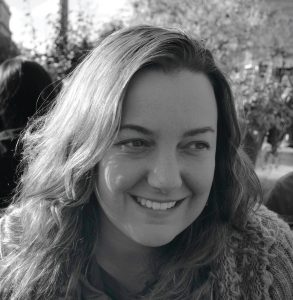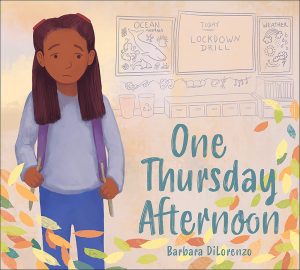My Journey to Write About Lockdown Drills
By Barbara DiLorenzo
Trigger warning: This article concerns gun violence in public spaces and schools.
Gun violence in our schools is tragically all too common these days. In the aftermath of events like Uvalde, children often ask, “Why would someone want to hurt us?” Teachers navigate this delicate subject with information while keeping the risk in perspective. It’s an extra part of their job that I didn’t know about until my eldest child was almost in high school. Like many parents, I was focused on making lunch or looking over homework. Thinking about potential gun violence in my children’s schools was too intense—so I tried not to. But in 2018, two events forced me to face this issue directly.
In March of that year, I went to a shopping area in Princeton, NJ, with my baby to meet a friend. A suicidal gunman was in the Panera where we were to meet, and my baby and I huddled in a bookstore with other terrified shoppers until the police told us to evacuate. I learned later that the gunman died inside the restaurant.
That event rattled me, but it was so out of the ordinary, and life was so busy I didn’t dwell on my feelings about the experience. I believed that this singular event had to be rare, despite the prevalence of stories in the media. Princeton is a safe place, despite the actions of one person.
However, on December 7, 2018, only 8 months after the Panera incident, I was caught in an active shooter lockdown during an author visit at the Chapin School near Princeton. I had just completed two presentations to the lower school, and though I was ready to leave, the librarian wanted to show me all the student art inspired by my books. While we were there admiring the students’ work, an alarm went off. The parent volunteers and I didn’t understand it, but the librarian quietly closed the blinds, turned off the lights, and calmly told us to be quiet and huddle behind her desk. She said that the alarm meant an active shooter was in the building.
The initial panic wore off as we sat there for ten, twenty, then thirty minutes. We chatted nervously and quietly. I wondered what the kids, the sweet children that were asking me questions less than an hour before, were thinking and feeling. I thought of the students who couldn’t keep still during my presentation. I wondered how the teachers were holding up while helping students to stay calm. Believing a real threat was in the building, I was genuinely scared for us all.
After some time, the librarian received a text saying it was not a shooter, but a threat called into area schools. The lockdown was lifted after ten more minutes, and I was free to go. Driving home, I’ve never been more shaken. These two events brought home the idea this isn’t as rare as it should be.
In the following months, my mind kept returning to the students in the active lockdown. Our libraries have picture books on every topic a young child might encounter, except this. Although a tough task, I decided to write a book to validate what children might be feeling and encourage dialogue between caregivers and young people. That book is One Thursday Afternoon (Flyaway Books, 2022.)
As I was contemplating the book, an image emerged of a conversation between a girl and her grandfather after school, outside in nature. I wanted the reader to feel safe as the main character explores her feelings surrounding a school lockdown drill held earlier that day. I imagined the grandfather might believe he understands his granddaughter’s feelings since he experienced Duck and Cover drills as a child. However, students today are going through something new. I wanted the girl to voice this. Upon reflection, her grandfather understands and articulates that it is our job as adults to listen to children and support them.
I didn’t want to offer superficial answers in One Thursday Afternoon. My priority was breaking the ice on a complex topic, validating the child’s feelings, and providing tools for handling anxiety. After the events of 2018, I found my own anxiety elevated. I would jump at loud noises in public thinking they were gunshots (which is weird because I never heard shots in these events). The coping skills that reduced my stress are the same ones I propose in One Thursday Afternoon:
- Find people that feel safe to talk with and share your feelings.
- Engage in a creative outlet such as painting, dance, or conducting science experiments—whatever makes you happy.
- Spend time observing nature—whether outdoors in a park or just by watching a bird near a window.
I am very grateful that my agent saw this as an important subject and even more thankful that Flyaway Books embraced this complicated topic. One Thursday Afternoon feels like the most impactful work I’ve ever created. I’m sad that it needs to exist, but I will feel better if it gives hope and validation to students everywhere.

Text and images are courtesy of Barbara DiLorenzo and may not be used without express written consent.



Leave a Reply